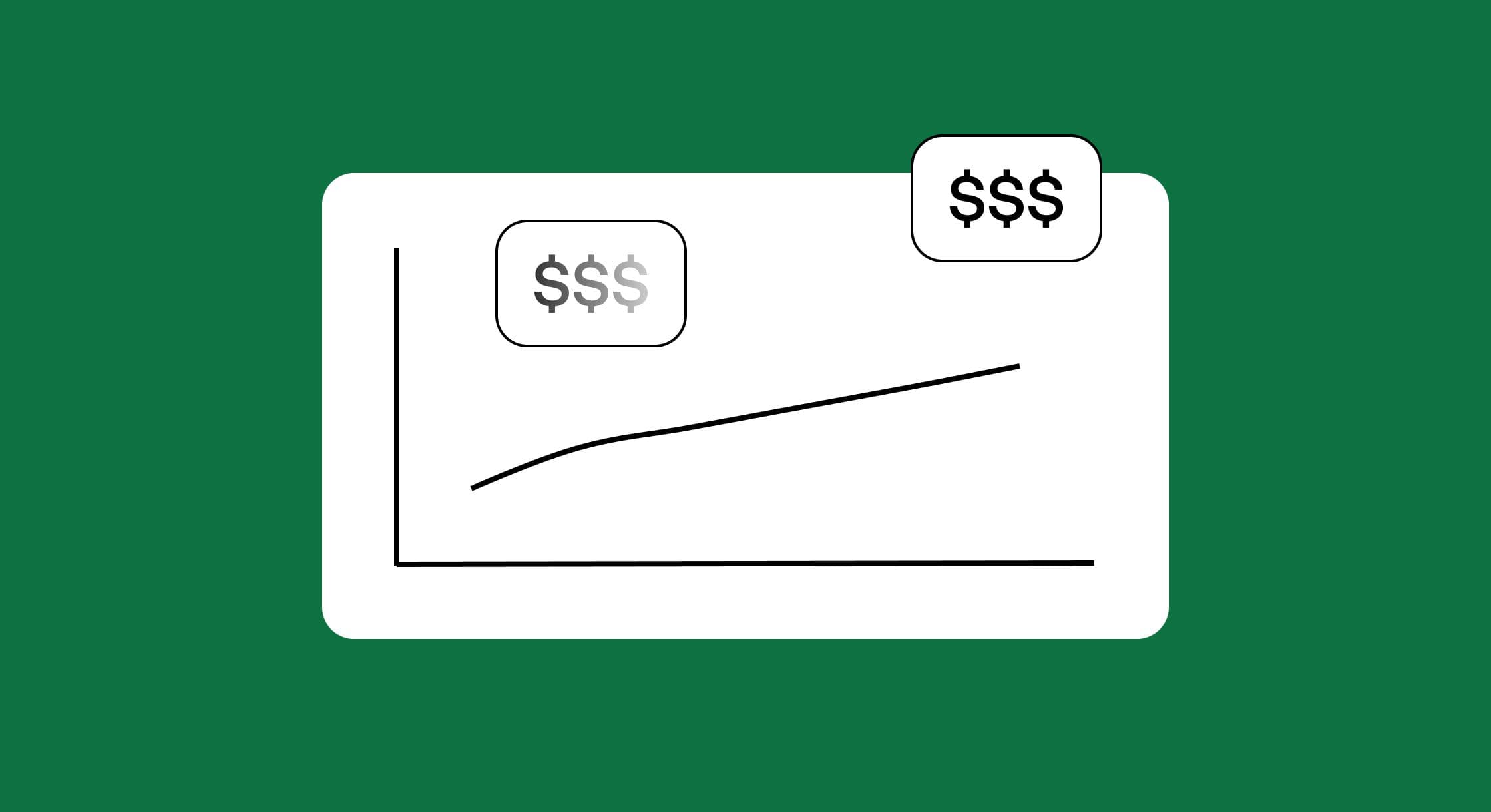/Walmart Seller Fees, Pricing Breakdown & Cost Optimization Strategies

Walmart Seller Fees, Pricing Breakdown & Cost Optimization Strategies
Selling on Walmart’s Marketplace offers eCommerce sellers a significant opportunity to tap into one of the largest retail platforms in the world. With millions of active customers and a trusted brand reputation, Walmart Marketplace can be an excellent channel for growing your business. Unlike some other platforms, Walmart Marketplace does not impose monthly fees, making it a cost-effective option for sellers. However, success on Walmart requires understanding the associated fees, pricing structures, and strategies to optimize costs for maximum profitability.
In this blog post, we’ll break down Walmart seller fees, pricing components, and provide cost optimization strategies to help you make informed decisions and maximize your earnings.
Getting Started with Walmart Marketplace
Join Walmart Marketplace
To start selling on Walmart, you’ll need to join the platform. Here’s a step-by-step guide to help you get started:
Visit the Walmart Marketplace Website: Head over to the Walmart Marketplace website and click on the “Join Now” button to begin your registration process.
Complete the Registration: Fill out the Walmart seller application with your business information, including your company name, address, and tax ID number. Make sure all details are accurate to avoid any delays in the approval process.
Verify Your Contact Information: Walmart will send a verification email to confirm your email address and phone number. Follow the instructions to complete the verification.
Set Up Your Seller Account: Once your contact information is verified, you’ll need to set up your seller account. This includes entering your payment information and selecting your shipping options.
Wait for Approval: After submitting your application, Walmart will review your information. This process can take up to four weeks. Once approved, you’ll receive a confirmation email, and you can start listing your products and selling on Walmart Marketplace.
Joining Walmart's online marketplace is a straightforward process that opens up a world of opportunities for third party sellers. By following these steps, you’ll be well on your way to reaching millions of potential customers.
Walmart Seller Fees Overview
Understanding Walmart Marketplace fees is crucial for sellers to navigate the growing eCommerce landscape effectively. Unlike Amazon, Walmart does not charge a monthly subscription fee to sell on its marketplace. Instead, it primarily operates on a commission-based model. Here are the fees that sellers need to be aware of:
1. Referral Fees
Walmart charges a referral fee based on a percentage of the item’s selling price, similar to other platforms like Amazon, but with some differences in specific categories. This fee varies by product category and generally ranges between 5% and 15%. Some key category fees include:
- Apparel & Accessories – 5-15% (varies based on sales price)
- Automotive & Powersports – 12%
- Beauty Products – 8-15% (varies based on sales price)
- Baby Products (excluding apparel) – 8-15% (varies based on sales price)
- Cell Phones – 8%
- Consumer Electronics – 8%
- Home & Garden – 15%
- Health & Personal Care – 15%
- Kitchen – 15%
- Pet Supplies – 15%
- Toys & Games – 15%
- Video Game Consoles – 8%
These referral fees are automatically deducted from each sale before payout to the seller. Refer to the Walmart Marketplace Referral Fee Schedule for a complete list of categories and the associated referral fee percentage.
2. Fulfillment Fees
Sellers can choose between three fulfillment options, and it's important for sellers to evaluate the costs associated with each.
- Self-fulfillment: The seller is responsible for storing, packing, and shipping orders.
- 3PL: The seller may choose to hire a third party logistics company to store, pack, and ship orders on their behalf.
- Walmart Fulfillment Services (WFS): Walmart’s fulfillment network where they store, pack, and ship products on behalf of the seller.
Walmart Fulfillment Services Fees
For WFS, the fees are based on item weight and dimensions, similar to Amazon’s FBA. WFS costs include storage fees, fulfillment fees and returns processing fees. Here is an explanation of how each of these fees work:
WFS Storage Fees: Charges for storing inventory in Walmart’s warehouses.
Walmart determines storage fees based on the volume of inventory and its duration at a Walmart fulfillment center. From January to September, the standard storage fee is $0.75 per cubic foot per month. However, during the peak holiday season from October to December, this rate increases to $1.50 per cubic foot per month for inventory stored beyond 30 days. Additional fees apply if products remain in Walmart fulfillment centers for more than 12 months. Sellers can monitor inventory duration using the Inventory Health report available in Walmart Seller Center.
WFS Fulfillment Fees: Covers picking, packing, and shipping.
With WFS, shipping fees are calculated based on the unit weight, girth, and dimensional weight of items. The final shipping weight is determined by adding the weight of the item and its packaging materials, then rounding to the nearest pound. This is crucial for calculating shipping fees, especially for items that fall within specified weight limits. Different criteria apply for standard and large items, which may incur additional fulfillment fees.
Standard Fulfillment Fees: Standard size items are shipped by small parcel and the fee is based on the greater of weight or dimensional weight.
To calculate dimensional weight: (length x width x height in inches) / 139
- Items up to 1lb: $3.45 base fee per unit.
- Items up to 2lb: $4.95 base fee per unit.
- Items up to 3lb: $5.45 base fee per unit.
- Items 4lbs and above have a flat fee per unit + $0.40 for each pound.
Big and Bulky Fulfillment Fees: Extra large or heavy products that are between 150 - 500lbs are shipped by freight, and therefore carry a higher fee per unit starting at $155 + $0.80 per pound for every pound over 90lbs.
Additional Fulfillment Fees: There are additional fees for standard items (these fees do not apply to big and bulky items) that meet the following criteria:
- Article of clothing
- Item contains a chemical, aerosol or pesticide
- Item contains a battery
- Item is priced less than $10
- Oversized, but not considered bulky (over 90lbs or longer than 48 inches)
Returns Processing Fees
Walmart customers do not incur any shipping costs for returns. Therefor, the cost of returns is the seller’s responsibility. When Walmart handles customer returns with WFS, the seller pays a returns processing fee based on shipping weight.
The standard return fee per unit by shipping weight for items under 20lbs are as follows:
- Up to 1lb: $4.70
- Up to 2lbs: $6.20
- Up to 3lbs: $6.70
- 4-20lbs: $7.00 + $0.40 for each lb. over 4 lb.
- Refer to the returns processing fees page in Marketplace Learn for the cost of returns on heavier items.
- Additional fees also apply for apparel, hazardous materials and oversize items.
For returns deemed "Walmart at fault," - which include items damaged during shipping, late arrivals, lost items, or incorrect items received - Walmart will absorb the return shipping expenses and no return fees are charged to the seller. If the item was damaged or lost in a Walmart fulfillment center, the seller will be credited based on the sales price. However, Walmart will retain the fulfillment and referral fees.
3. Other Fees
Additional fees to be aware of include:
- Problem Inventory Fee: This fee applies to inbound shipments that cannot be received at a fulfillment center. If the issue cannot be resolved, Walmart may return the item at the seller’s expense. Common reasons include incorrect labeling or missing poly bags.
- Disposal and Removal Fee: Products can either be disposed of or removed from inventory and returned to the seller for a fee. Walmart's fulfillment centers play a crucial role in managing these storage and removal fees, ensuring efficient handling and cost management.
- Advertising Costs: Sellers can choose to run sponsored ads through Walmart Connect for an additional cost.
How to Calculate Walmart Seller Fees
The Walmart Marketplace Fee calculator is a valuable tool to help sellers estimate storage and fulfillment seller fees. Get a clear breakdown of the costs associated with storing, picking, packing, and shipping your items efficiently. Simply enter your item's weight, dimensions, and packaging details, along with any other relevant product information.
Pricing Breakdown: How to Calculate Cost and Profit
To determine profitability on Walmart Marketplace, sellers should carefully calculate total costs associated with selling and fulfillment. Understanding these costs is crucial when deciding what to sell on Walmart, as the referral fees are based on product categories.
Key Cost Components
- Product Cost (COGS - Cost of Goods Sold)
- Referral Fees (Walmart Commission Fees)
- Fulfillment Costs (Self-fulfillment, 3PL, or WFS fees)
- Advertising Expenses (PPC & Sponsored Listings)
- Storage Fees (If using WFS or 3PL)
- Return Processing Fees
- Other Overhead Costs (Packaging, Software, Customer Service, etc.)
Example Pricing Calculation
Let’s assume you’re selling a Kitchen Appliance priced at $50 with the following cost breakdown:
- Cost of Goods Sold (COGS): $20
- Walmart Referral Fee (15%): $7.50
- WFS Fulfillment Fee: $6
- Advertising Cost Per Sale: $5
- Other Expenses (Packaging, software, etc.): $3
Total Costs = $41.50
Profit = Selling Price - Total Costs
$50 - $41.50 = $8.50 Profit per Sale
By analyzing these cost factors, sellers can price their products strategically to maintain profitability.
Pricing Products on Walmart
Competitive pricing is crucial for winning the Walmart Buy Box, a prominent section on product pages that highlights the seller's details, pricing, and purchasing options. Winning the Buy Box significantly affects sales by designating the default purchase option for consumers, making it essential to adopt strategies to improve the likelihood of securing this prime position.
Cost Optimization Strategies for Walmart Sellers
Reducing costs and maximizing profitability is crucial for long-term success. Here are key strategies for optimizing costs:
1. Optimize Fulfillment Costs
- Compare Self-Fulfillment vs. WFS: Sellers should compare whether handling fulfillment in-house or using Walmart Fulfillment Services is more cost-effective.
- Consider using a 3PL: Evaluate the costs and benefits of using a third party logistics provider to optimize performance.
- Consider Multiple Fulfillment Methods: Understanding the fees associated with different fulfillment methods is crucial for a Walmart marketplace seller to effectively evaluate, manage and optimize costs.
“After analyzing data from over 10,000 multichannel sellers, we’ve discovered that optimizing warehouse placement can reduce fulfillment costs by up to 32% while improving delivery times by 27%. At AMZ Prep, we’ve developed a proprietary geolocation algorithm that helps sellers strategically position inventory to maximize both Walmart and Amazon’s fulfillment networks, resulting in significant competitive advantages for our clients.” - Arishekar N., Director of Marketing, AMZ Prep
2. Optimize Shipping and Packaging
- Negotiate Shipping Rates: If self-fulfilling, work with carriers to negotiate bulk shipping discounts.
- Use Efficient Packaging: Optimize packaging size to reduce dimensional weight charges and minimize shipping costs.
3. Optimize Product Pricing
- Leverage Dynamic Pricing: Utilize a Walmart repricing tool to stay competitive while balancing conversion rates and profitability.
- Bundle Products: Offer bundled items to increase average order value and justify higher pricing.
4. Minimize Return-Related Costs
- Provide Clear Product Descriptions: Reduce return rates by setting clear expectations on product features and specifications.
- Improve Packaging: Prevent product damage to avoid unnecessary returns.
- Offer Great Customer Support: Resolve issues proactively to prevent returns and disputes.
5. Improve Inventory Management
- Avoid Overstocking: Monitor sales trends and demand to avoid excess inventory storage fees.
- Use Just-in-Time Inventory: Keep lean inventory levels to minimize warehousing costs.
- Prevent Stockouts: Avoid running out of stock, which can impact rankings and sales velocity.
6. Optimize Cash Cycles to Stay Ahead
- Leverage Walmart’s Early Payout Options: Request a one-time transfer to get paid early, or utilize an approved third-party payout provider to get paid faster.
- Don't Wait to Get Funding: Get financing before you need it."Cash flow is the lifeline of any ecommerce business. The faster you can turn inventory into cash, the faster you can reinvest and scale. Sometimes the best strategy is a combination of tactics. Leverage Walmart’s early payout options, consider working capital financing, and use credit float strategically to keep your capital moving. Smart sellers don’t just manage costs—they optimize their cash cycles to stay ahead. And when it comes to working capital, get it before you need it. Don't wait until sales start slowing down as this will decrease the amount of capital that will be extended to you." - Oz Merchant, CEO, ecomsellersHQ
7. Enhance Listing Quality
- Use High-Quality Images: Improve conversion rates with professional, high-resolution product images.
- Optimize Product Titles & Descriptions: Use relevant keywords and detailed descriptions to improve your Walmart Listing Quality Score and boost discoverability.
- Encourage Customer Reviews: Positive reviews enhance trust and increase conversion rates.
8. Reduce Advertising Costs
- Optimize Ad Campaigns: Use data-driven ad strategies to target high-converting keywords.
- Leverage Organic Growth: Improve SEO with optimized listings to drive more organic traffic and reduce dependency on paid ads.
- Retargeting Campaigns: Utilize retargeting ads to re-engage potential customers who viewed but didn’t purchase your products.
9. Leverage Walmart’s Promotional Tools
- Enroll in Walmart’s Price Incentives program: The Price Incentives program is designed to boost sales by ensuring competitive pricing for Marketplace items. It includes two types of incentive adjustments: Walmart-funded incentives and Reduced Referral Fees.
- Leverage Walmart Sponsored Ads: Invest in high-ROI advertising campaigns to drive sales efficiently.
Conclusion
Selling on Walmart Marketplace can be highly profitable, but it’s essential to understand the associated fees and pricing structures to maximize earnings. By implementing cost optimization strategies — such as refining fulfillment options, improving pricing strategies, reducing ad costs, and optimizing inventory — you can enhance profitability while remaining competitive.
By leveraging Walmart’s tools and maintaining a data-driven approach, eCommerce sellers can scale successfully while minimizing unnecessary costs. Stay informed, test different strategies, and continuously refine your business model for long-term success on Walmart Marketplace.
FAQs
How can I calculate my seller fees?
Use the Walmart seller calculator to estimate your fees.
How can I reduce my referral fees?
By participating in the Reduced Referral Fee incentives program, you can benefit from a lower Referral Fee when you maintain the eligible item's price at or below the suggested target price. This guide will walk you through the steps to manage your item’s enrollment in the program.
Can I dispute a referral fee?
You can dispute a Referral Fee (also known as a Commission Fee) if you believe it was incorrectly categorized. These disputes must be submitted within 90 days of the order settlement date. Any disputes filed beyond this timeframe will be denied, and the decision will be final.
Are referral fees charged on shipping and sales tax?
The Referral Fee is a percentage-based charge applied to the total sales price of each product sold, which includes shipping, handling fees, and any applicable gift wrap or similar charges, but excludes separately stated and charged taxes.
Will I get a chargeback fee for customer credit card disputes?
The seller is responsible for all credit card chargebacks except for chargebacks that are a result of credit card fraud, for which Walmart is responsible. You can learn more in Walmart Marketplace’s Credit Card Chargeback policy.


